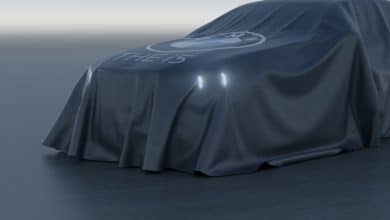Techno Chronicle | Black mass for a rosier and greener future

These days, electric car manufacturers all have the same idea in mind, that of creating fully recyclable cars (as much as possible, at least) in order to limit their environmental footprint.
However, now a new component could come to their aid, a product called by English speakers black mass. This material is obtained from the residue of old electric vehicles, more precisely from their old batteries.
This new material looks promising within the industry, so much so that some go so far as to nickname it “the new black gold”… And if we take into consideration that the demand for batteries for electric cars is increasing. sharp rise in recent years, it is easy to believe that this new black gold could become a highly prized product.
The challenges of manufacturers
However, some challenges arise with this product. First of all, you should know that currently, the electric vehicle manufacturing industry is facing two major problems.
Firstly, manufacturers must deal with the pollution caused by the lack of recycling of a large part of their components. This is not very pleasing.
Second, several manufacturers face supply difficulties with regard to several basic materials, materials that come from outside and which could also become rarer in the years to come. These days, we are observing this phenomenon with China’s decision to limit exports of certain metals important to industry, notably gallium.
This is precisely where the famous black mass (let’s call it “black mass” in French, for more elegance…), which comes to us like a savior. Because yes, it could become a very useful solution for us Westerners to counter the challenges mentioned above. And why not solve both problems at once?
Old engines to the rescue
But at first glance, what is this famous black mass made of which could save the future of electric vehicle production?
The process is rather simple. Black mass is obtained when we recycle used batteries, or when we recycle the residue generated by their manufacture.
When an electric vehicle battery reaches the end of its life, it can be dismantled, crushed and collected what comes out, a powdery black mass, made of lithium, cobalt and nickel, among others. However, it is precisely these precious metals which risk becoming increasingly rare.
The result is a recycled material that could reduce the metal requirements of the electric vehicle industry, while reducing our dependence on distant countries that resort to mining.
And not just a little… We’re talking about a considerable reduction here. To give a little idea, let’s say that according to assessments made to date, it is estimated that recyclable materials will represent 15% of lithium production by 2030, 11% of nickel production and up to 44% currently. which concerns cobalt. This shows how interesting the potential of this material is.
But obviously, as nothing is perfect, everything is not without pitfalls.
Pitfalls? What pitfalls?
First, you should know that for the moment, the production of the black mass is insufficient on a European scale and also lags behind Asia. Currently, South Korea is the leader in this sector.
But still, the recycling of black masses could, in turn, pose some environmental challenges. In fact, the classification of the material varies greatly from country to country, making large-scale production difficult.
Ideally, the black mass should be classified as “hazardous waste”. When this label is affixed, only member countries of the Organization for Economic Co-operation and Development (OECD) will be able to export it.
However, another shadow is added to the picture, namely the appearance of new types of batteries created based on iron, lithium and phosphate, to give only a few examples here. These batteries are cheaper to manufacture, but there is also a downside, since their recycling is much more complex.
In other words, as much as the advantages of black mass are considerable and promising in theory, in practice, the adoption of this material on a large scale could constitute a significant challenge so that its potential can be fully exploited.
At present, the future of the black mass therefore remains uncertain. The fact remains that, given its great potential, the automobile industry has every interest in following any form of development as far as it is concerned.












